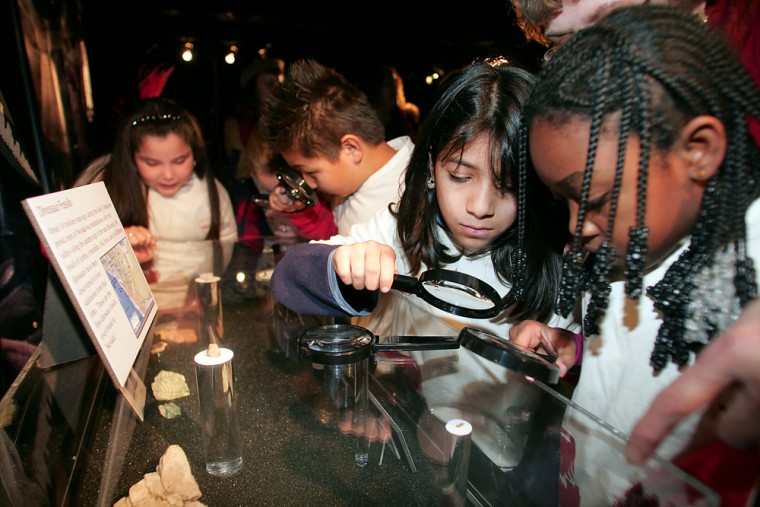Nevada's state fossil, the giant ocean-roaming fish-reptile known as the ichthyosaur, will have to share the scientific stage after researchers this week unveiled the first fossils of land-based dinosaurs ever found in Nevada.
The discovery expands the known range of the prehistoric beasts and offers a new understanding of life in the state some 100 million years ago.
Put on display for the first time Thursday were the femur of the raptor, dromaeosaur, the teeth of a sauropod, a tyrannosauroid and an iguanodont and unidentified dinosaur eggshell fragments.
The remnants, found at secret excavation sites in southern Nevada, pushed the known range of the ancient reptiles about 250 miles farther west, said Joshua Bonde, a graduate earth science student at Montana State University who is leading the dig.
"Most of these groups of dinosaurs are known from other places in the United States," he said. "What we're able to do is push the ranges of these animals all the way up to Nevada now, where previously the farthest west they've been is east-central Utah."
The find was presented in a tent on the site of a future state museum where they will be housed.
It marked a breakthrough in a state that had only turned up marine fossils until now, said Eugene Hattori, the state's curator of anthropology.
The state was largely underwater or nonexistent when the ichthyosaur swam the seas more than 200 million years ago. While the seas receded and the area became land about 145 million years ago, evidence of ancient land-based animals in Nevada previously did not exist.
"We were getting seashells, ammonites and crinoids and that sort of thing, and ichthyosaurs, the big fish, but we have not had the terrestrial fossils until Josh did his work," Hattori said.
Geology professor Stephen Rowland of the University of Nevada, Las Vegas, said the scientific community once didn't expect to find evidence of dinosaurs in Nevada even though there were dry-land rocks here from the Mesozoic age.
"Now we can put animals on the land. It helps us understand the whole landscape much more clearly," he said.
Bonde and his supervisor, Montana State paleontologist Dave Varricchio, discovered the site while prospecting in an area that had rock formations dating to the dinosaur age.
They found fossils of turtle shells and dinosaur teeth on the surface of what later became an excavation site in March 2005.
"If you find fossils on the surface, it's kind of like smoke, like there's something else," Bonde said. "Hopefully this is the tip of the iceberg."
The area is believed to have once been a flood plain where the creatures lived and died for many generations from 99 million to 112 million years ago, Bonde said.
"When it floods you get all this mud on the surface outside the river channel. Those muds are what we find most of these fossils in," he said.
Bonde said he plans to publish the findings in a leading paleontological journal. The beneficiary of some of the artifacts will be the new Nevada State Museum, which is expected to open in July 2008 at the Springs Preserve site in Las Vegas.
The public won't be see the items until then, when they will likely be part of a larger exhibit, museum director Greta Brunschwyler said.
"It's just fantastic for the people of Nevada, because we didn't even think we had dinosaurs here," she said.
